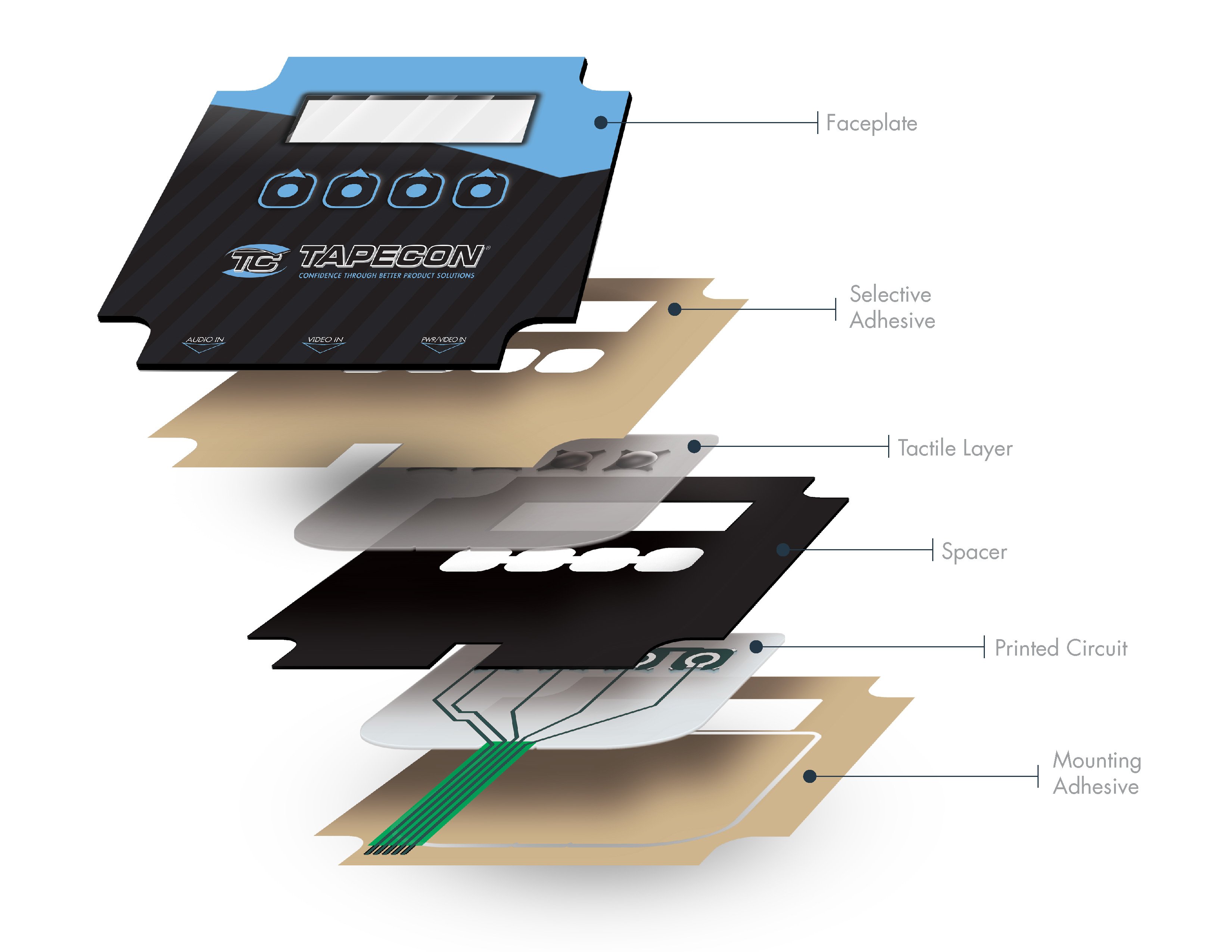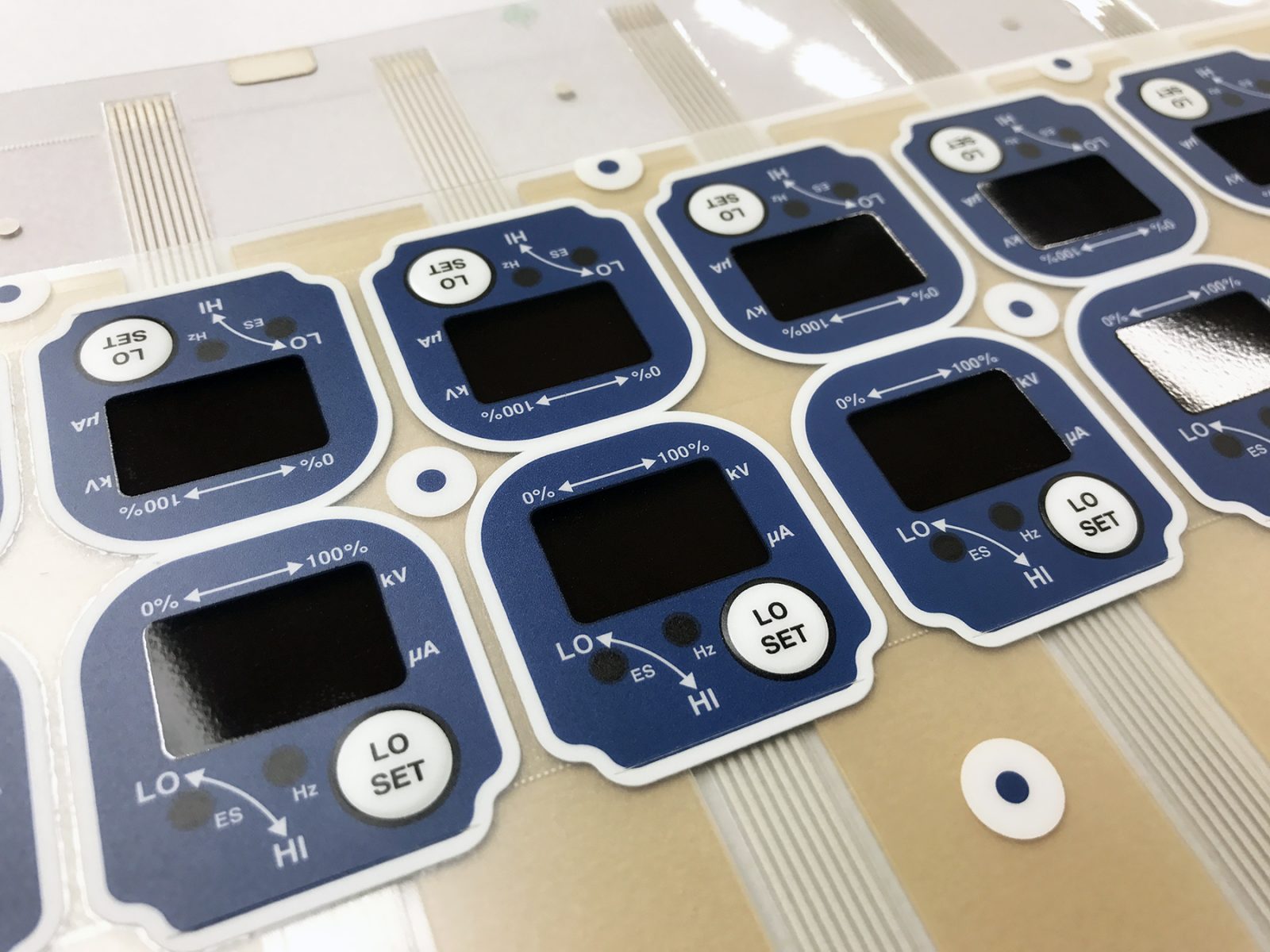A Comprehensive Guide to Membrane Switches for Product Designers
A Comprehensive Guide to Membrane Switches for Product Designers
Blog Article
Discover Exactly How Membrane Switches Function and Their Role in Modern Electronics
Membrane Switches represent a sophisticated assimilation of innovation and layout within the world of contemporary electronics, serving as crucial user interfaces in countless tools. Comprehending the details of Membrane switch capability and their broader effects in enhancing user experience welcomes additional exploration right into their design, benefits, and the cutting-edge advancements shaping their future in technology.
What Are Membrane Switches?

Membrane buttons are distinguished by their resilience and resistance to ecological elements, such as dirt, dampness, and severe temperatures. They can be personalized with various graphics, shades, and responsive feedback alternatives, boosting user experience while maintaining visual allure - membrane switches. The unification of published circuits allows for smooth combination right into devices, boosting overall performance.
The flexibility of Membrane switches is noticeable in their capacity to sustain both basic and intricate control features. They can include features such as LED indications and touch-sensitive technology, accommodating particular customer requirements. As modern technology remains to evolve, Membrane Switches remain important for making it possible for user-friendly and effective user interfaces, thereby playing a crucial function in the development of contemporary electronic gadgets.
Elements of Membrane Buttons
Membrane switches are composed of numerous vital parts that interact to create a practical and trusted interface. The main aspects include the visuals overlay, glue layer, spacer layer, and conductive traces.
The visuals overlay serves as the interface, normally printed on an adaptable substrate such as polyester or polycarbonate. This layer not only gives visual charm however also includes tactile responses, aesthetic cues, and protective features. Underneath the graphic overlay lies the glue layer, which protects the switch to the device and guarantees durability against environmental tensions.
The spacer layer is critical for preserving the needed gap between the graphic overlay and the circuit layer. This void enables the activation of the button when stress is applied. The conductive traces, typically made from silver or carbon, develop the electric pathways that finish the circuit when the switch is involved.
Additionally, a support layer may be consisted of for structural support and insulation. These components team up seamlessly, ensuring that Membrane buttons are both resilient and user-friendly, making them indispensable in numerous contemporary electronic applications.
Just How Membrane Switches Job
Just how do Membrane Switches feature effectively within electronic devices? Membrane Switches operate on the concepts of pressure-sensitive innovation, utilizing a split building that includes graphic overlays, adhesive layers, and conductive components. When a customer uses stress to the switch, the top layer deforms, allowing the conductive aspects under to make call and finish an electric circuit. This activity causes the wanted function within the tool.
The layout of Membrane switches is vital for their effective operation (membrane switches). The layers are diligently engineered to provide responsive responses, resilience, and resistance discover this to environmental factors such as wetness and dirt. The addition of domes-- little, increased locations within the switch-- enhances responsive action, providing users with an obvious click feeling upon activation
Furthermore, Membrane switches can be personalized in terms of size, shape, and graphics, making them appropriate for various applications. They are often made use of in control panels, medical gadgets, and consumer electronic devices due to their smooth style and dependability. Overall, the effective functioning of Membrane buttons is essential in boosting individual interaction and ensuring seamless operation in modern-day digital devices.

Applications in Modern Tools
Utilizing their one-of-a-kind style and performance, Membrane switches have become important parts in a broad range of modern-day electronic devices. These versatile interfaces are used in consumer electronics, commercial equipment, medical gadgets, and vehicle controls, supplying seamless user communication.
In consumer electronics, Membrane switches are typically found in devices like microwaves, cleaning equipments, and various other home devices, where they make it possible for intuitive control with a streamlined account. Their inconspicuous design facilitates integration right into portable tools, enhancing visual appeal without compromising performance.
In industrial applications, Membrane Switches function as control panels for machinery, using sturdiness and resistance to harsh environments. Their ability to withstand wetness and pollutants makes them excellent for usage in production and handling industries.
Clinical tools also take advantage of Membrane buttons, which are designed to be very easy to clean and preserve, ensuring health in professional settings. They are frequently utilized in diagnostic devices, individual monitoring systems, and portable clinical tools, where integrity is paramount.
Benefits of Membrane Buttons
One of the vital advantages of Membrane buttons is their flexibility, which allows them to be customized for a variety of applications across numerous markets. These buttons can be designed in various shapes and sizes, fitting distinct item demands while supplying smooth assimilation into devices. Their slim profile allows a portable and smooth design, frequently enhancing the aesthetic appeal of electronic products.
One more substantial benefit is their toughness - membrane switches. Membrane buttons are usually immune to dust, moisture, and chemicals, making them suitable for harsh atmospheres. This resilience extends their life expectancy contrasted to standard mechanical buttons, decreasing the need for constant substitutes
In addition, Membrane Switches offer cost-effectiveness. The production procedure involves printing modern technologies that minimize production costs, especially for big runs. This cost, incorporated with reduced maintenance needs, makes them an appealing alternative for manufacturers.

Verdict
In verdict, Membrane Switches stand for a significant improvement in customer interface technology within modern-day electronics. As the demand for user-friendly and durable user interfaces proceeds to expand, the function of Membrane switches in shaping individual experience will definitely broaden.
Membrane Switches stand for an innovative integration of modern technology and design within the world of modern-day electronic devices, offering pop over to this site as necessary user interfaces in various devices.In the realm of contemporary electronic devices, Membrane Switches serve as crucial parts that promote customer communication with tools. As technology continues to advance, Membrane Switches stay important for making it possible for intuitive and efficient individual interfaces, consequently playing a critical function in the development of contemporary electronic devices.
Exactly how do Membrane Switches function effectively within electronic tools? In general, the effective performance of Membrane buttons is pivotal in improving customer interaction and guaranteeing seamless operation in modern digital devices.
Report this page